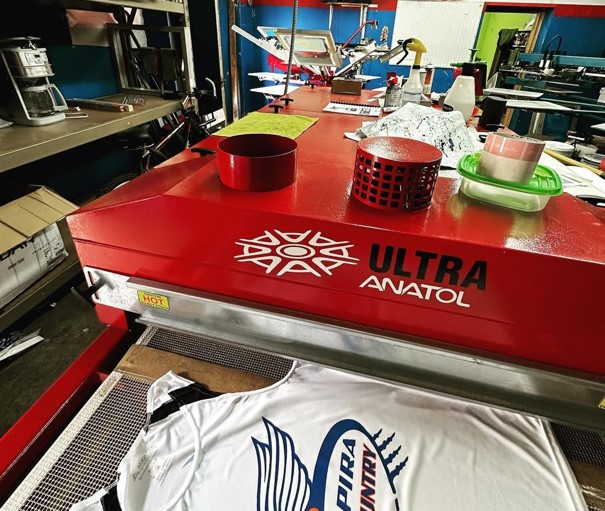

Революция в индустрии трафаретной печати благодаря передовым технологиям и качественному обслуживанию
Anatol Equipment Manufacturing Co.
1429 S Shields Dr
Waukegan, IL 60085


Революция в индустрии трафаретной печати благодаря передовым технологиям и качественному обслуживанию
Anatol Equipment Manufacturing Co.
1429 S Shields Dr
Waukegan, IL 60085


Oscar Bello from Intersports Screen Printing took some time to chat with Anatol Equipment about his experience updating his shop with the Anatol Ultra forced air electric conveyor dryer and Aurora UV LED exposure unit.
Q: What kind of conveyor dryer were you using before?
A: We had an M&R™ electric dryer. It was a smaller unit.
Q: Why did you need to upgrade?
A: We wanted to expand our screen printing capabilities into water-based printing, nylon fabrics and other sensitive material. with the other dryer that we had, we could do those things, but we ran a chance of scorching the garment or not adequately curing water-based prints.
Q: How has the Ultra affected your workflow? Can you cure more shirts, or different types of ink? Were you able to expand your production?
A: Yeah, right now with the Ultra’s forced air system, we’re able to cure a variety of garments, canvas tote bags and other materials. That’s something we couldn’t really do before. The Ultra has been really effective, especially with construction apparel — neon and safety greens. With our other dryer, if we didn’t lay the garments perfectly flat, we would get some burn marks on them. Now with the Ultra, they come out perfectly cured and there’s no scorching or burning. They cure consistently.
Q: Has your production been impacted in a positive way?
A: We’re getting better quality from the Ultra, because of the forced air system. We’re getting more repeat customers. I love the Ultra because we don’t have to tell customers «Our dryer is not equipped for this» when they request a certain ink or material.
Q: What are your favorite features of the Ultra?
A: You can program different temperatures and belt speeds for different garments. Right now, we have six programs saved. We’re not only using the Ultra to cure screen prints, but DTG and DTF also. We have programs for those methods, as well as for polyester fabrics and metallic garments. The Ultra has definitely provided flexibility for us to print on more materials.
Q: What kind of exposure unit were you using before the Aurora?
A: It was like a homemade unit, in two parts. It had bulbs and glass from totally different machines and we combined them. I couldn’t tell you what brand it was originally, but it used to take us seven or eight minutes to burn a screen.
Q: What made you decide on the Aurora?
A: We do a lot of different images and printing styles. Sometimes we print halftones. On the Aurora, we can set different exposure times and pressures depending on the job. We also have the flexibility to burn smaller screens or our full-size automatic press screens.
Q: Has the quality of your prints improved with the Aurora?
A: With the Aurora, we can resolve all the smallest details. Our customers send in their art, and we can reproduce it exactly. Before, we would lose some detail, especially with halftones or rounded edges that wouldn’t expose properly. The LED system in the Aurora is way, way, way better.
Q: Has your exposure time changed?
A: Like I said, with our old unit it could take seven or eight minutes to burn a screen. Now we’re burning screens at three seconds, with better detail in our images.
Q: When it comes to the touchscreen operating system, do you have any special features or settings that you like?
A: Everything is very user-friendly. The manual actually helps too. The best feature is that we can save different programs for different types of images and meshes. We have programs for thin meshes, thicker meshes, finer or more open meshes. We have some programs for halftones. We use two types of film here, so we have programs for both types. The save and load function is very valuable. It’s a complete 180 from before.
Your message was successfully sent!